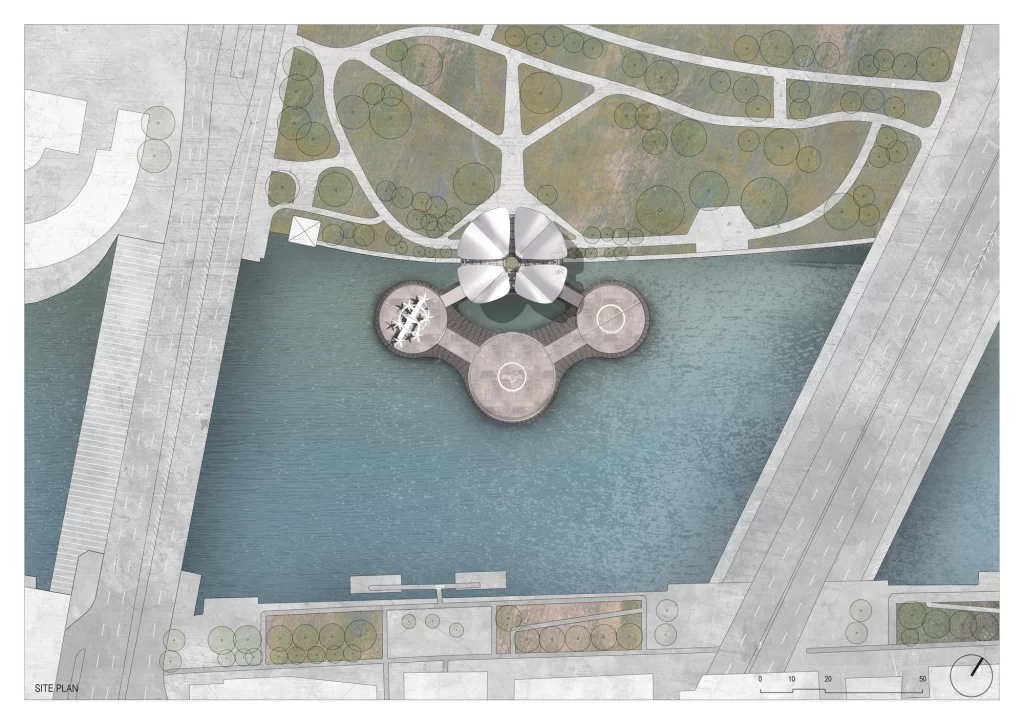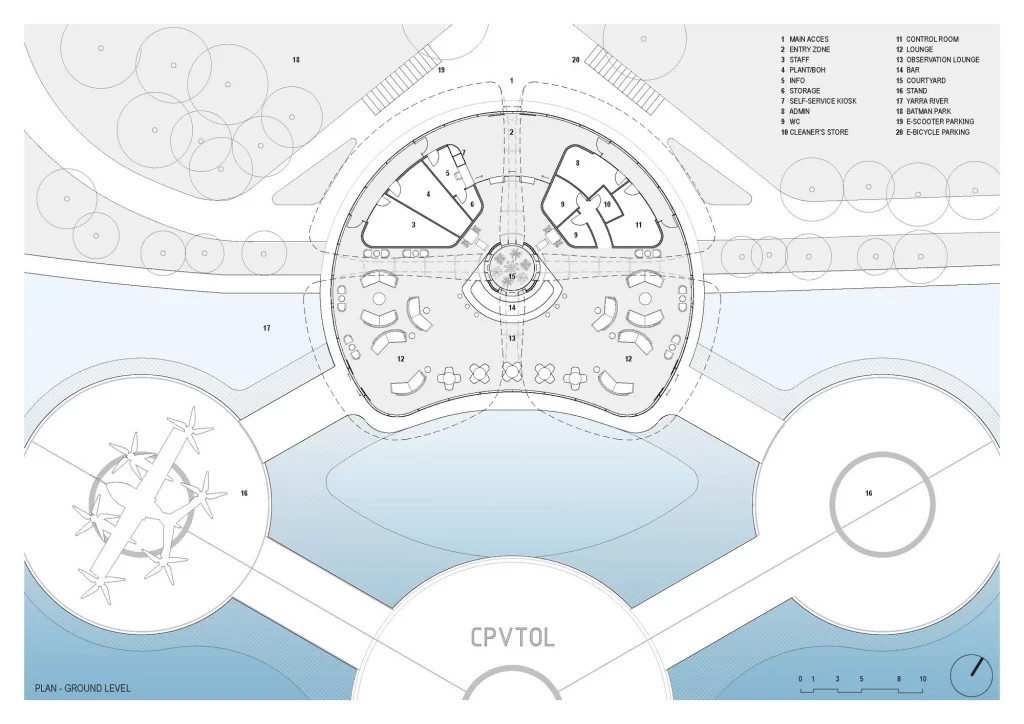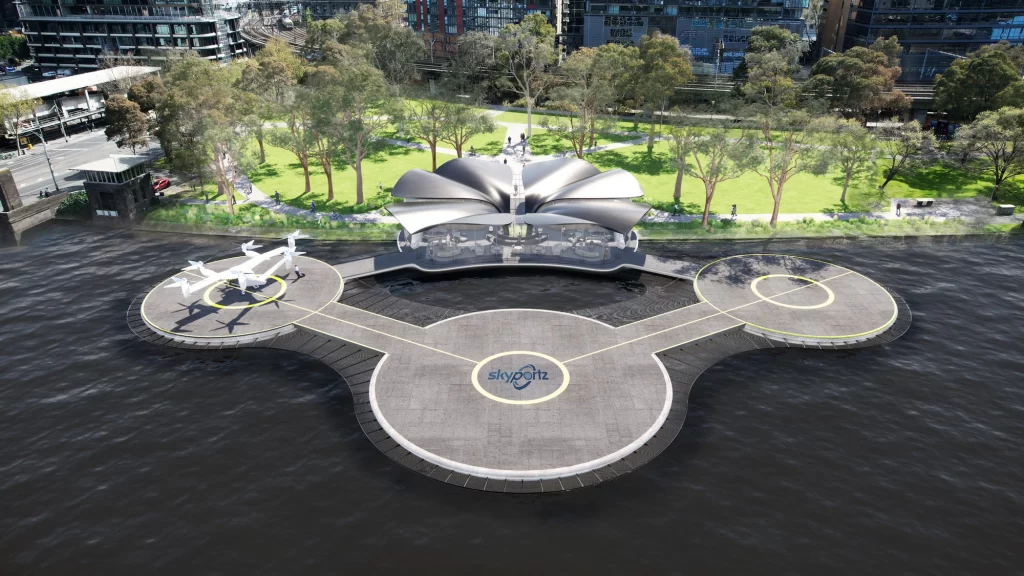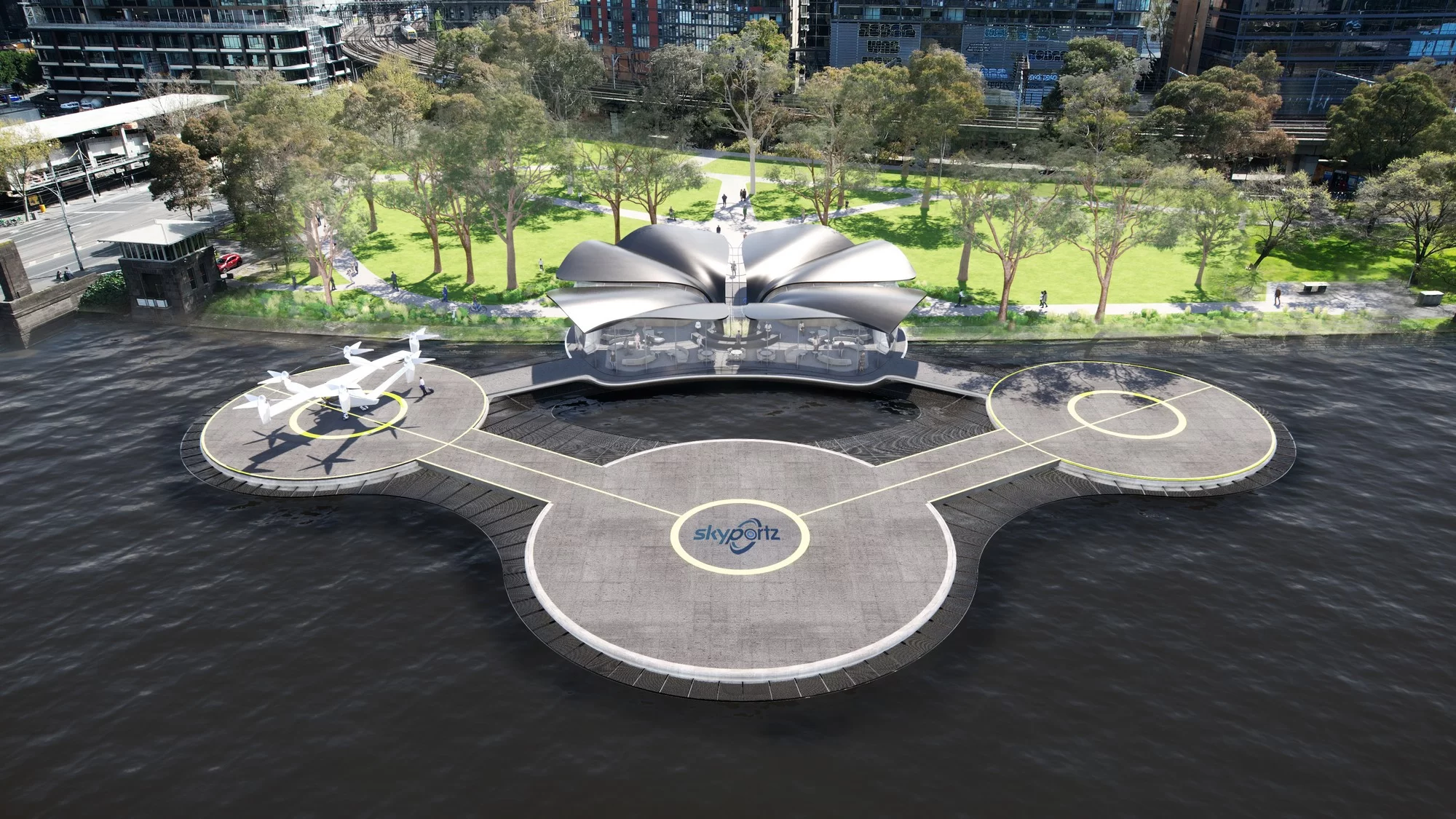Contreras Earl Architecture (CEA) has launched a futuristic new proposal for an e-mobility hub at Batman Park on the Yarra River working with Skyportz® and Pascall+Watson Architects.
The proposal is to replace the park’s existing helipad with a new purpose-built vertiport to accommodate the introduction of clean, quiet, electric air taxis. Under the plans the Greenline park development on the Yarra River will become a multi-modal hub for electric scooters, bikes, ferries, hire boats and a cafe. The details of the proposal will be released this week at the World Air Taxi Congress in San Francisco.
The design, for Australia’s second vertiport after the Caribbean Park terminal in Melbourne, brings together CEA’s expertise in innovative architectural design and Pascall Watson’s extensive experience in aviation.
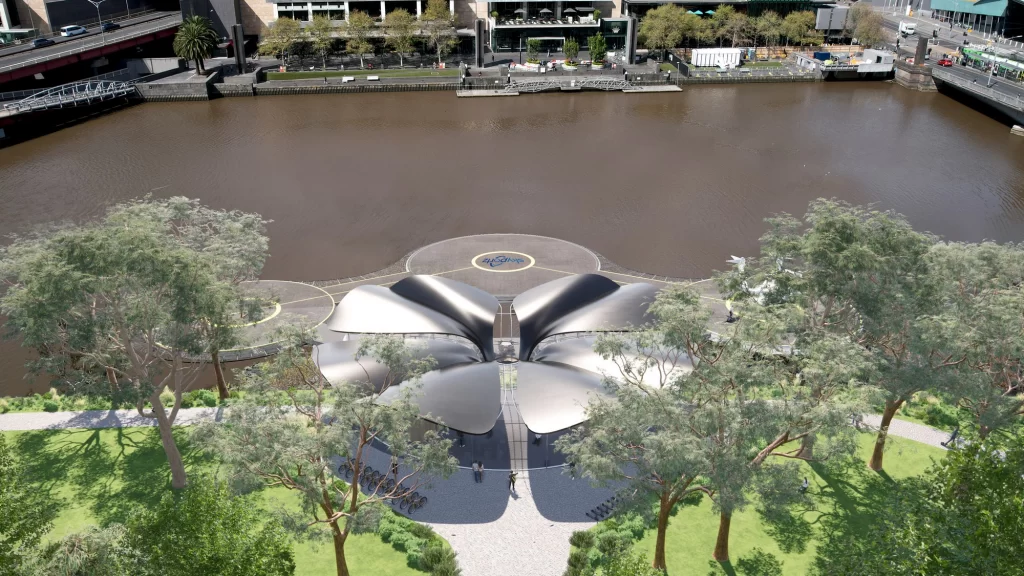
The cutting-edge concept is fully prefabricated, and self-sufficient, embracing advanced technology and innovative structural systems to allow swift assembly and operational readiness. The proposed facility can be fully operational within a matter of days of the delivery of the components to the designated site.
The future for vertiports – micro-scale airports for aircraft which land and take off vertically – can be on land, waterfront sites, or on building rooftops, meaning that traditional construction methods are often not appropriate. The use of prefabrication in the construction of vertiport facilities allowed the designers to break free from traditional approaches in the field.
Skyportz has identified about 400 potential sites across Australia, including retrofitting existing buildings and multilevel car parking garages. As soon as electric car taxis are certified for commercial use, in a bid to decarbonize aviation, the new Batman Park vertiport could utilise existing helicopter permissions to offer a quiet, zero-pollution solution that gets its users quickly and quietly to and from a range of metropolitan destinations.
The sleek, sculptural building has an organic form that coexists harmoniously with the built and natural environment. Based on patterns found in nature, the curved forms and organic lines optimise environmental performance and encourage public engagement and are imbued with a sense of warmth and soul.
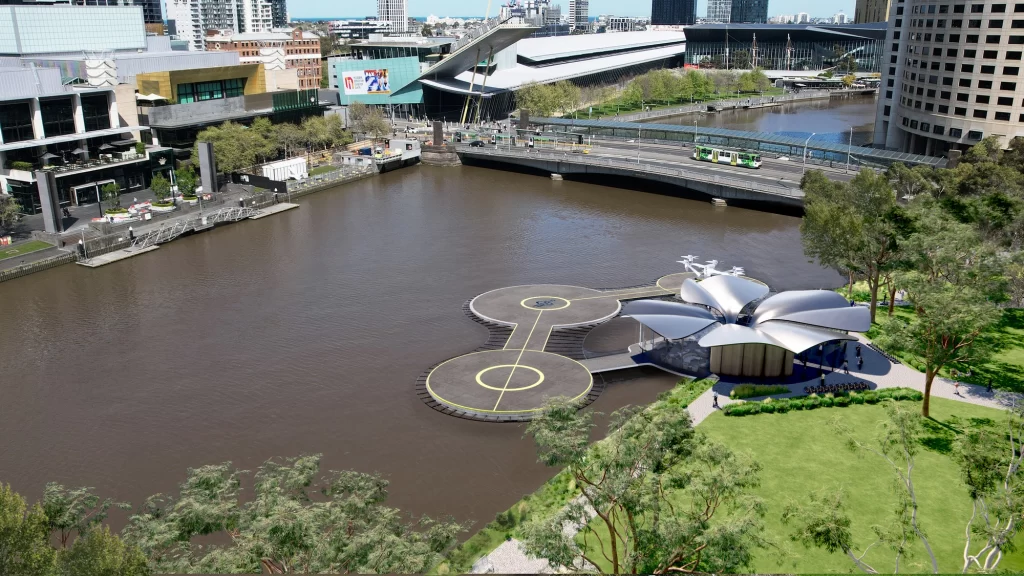
Skyportz CEO, Clem Newton-Brown said: “Paris has five vertiports proposed for the Olympics next year, primarily using existing airports and helipads. The one new vertiport they have chosen to be on the river. This aligns with our thinking that when cities need to choose vertiport locations, the lowest hanging fruit will be the waterfront locations, meaning this model has huge potential for wider roll out internationally. We are really excited to have developed this concept in conjunction with Contreras Earl Architects and Pascall+Watson Architects”.
Contreras Earl Architecture Director, Rafael Contreras said: “This landmark building is the result of addressing many different important parameters, including sustainability, context, climate, community and the user experience. The vertiport will feature a high-performance roof designed to be structurally robust, lightweight and sustainable owing to its aluminium monocoque structure – the same system employed in the manufacturing of cars and aircraft. By embracing the latest technology, we are liberated from traditional building practices and forms, and free to explore more forward-thinking ideas. Melbourne is ahead by having two vertiports designed in its city. We are proud to be part of the implementation of this new technology and what it means for the future of Melbourne and clean, green travel.”
Microflite CEO, Rod Higgins, the existing operator of the Melbourne Heliport at Batman Park said: “There is no doubt that helicopters will soon be phased out in tourism and short commuter flights and Microflite wants to lead the way in decarbonising aviation as soon as electric aircraft are certified for commercial use. Of the many thousands of passengers and tourists that Microflite fly from its Melbourne Heliport each year, an increasing number are asking when the aviation industry will be progressing to sustainable operations”.
Mircoflite has plans to transform its fleet of traditional helicopters with electric aircraft and has placed orders which are expected to be delivered within the next five years.
